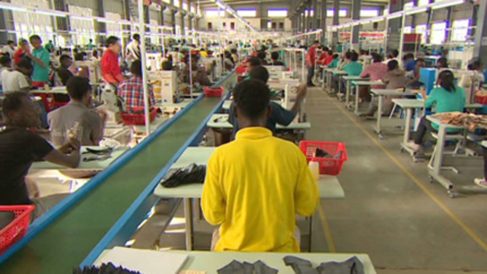Local manufacturers have expressed worry over the magnitude of loans provided by commercial banks to the manufacturing sector, calling them insufficient and one that does not boost productivity in the sector, Entrepreneurng report.
Over 53% of manufacturers disagreed that commercial bank loans to the manufacturing sector promote productivity, according to the Manufacturers Association of Nigeria (MAN).
They stated that a major obstacle to industry, foreign exchange, and access to electricity outside of the country has been the lack of limited credit.
When loans are available, according to the operators, they typically have a short-term tenor and are insufficient to sustain the medium to long-term gestation needed in the industrial industry.
The operators bemoaned the implications of little investment, limited capacity utilization, and a low level of production in the industry.
The local producers noted that these problems, among others, are primarily to blame for the challenging operating environment and its diminishing impact on manufacturing activities in the nation during the quarter under review.
They used the Manufacturers CEO’s Confidence Index (MCCI) of MAN as a benchmark for measuring changes in the pulse of operators and trends in the manufacturing sector quarterly.
The Central Bank of Nigeria (CBN) has seen an increase in lending from commercial banks through the SDF window since the beginning of the month, even though the CBN has little exposure to the productive sector; the most recent balance was N201.34 billion.
The amount unloaded by the financial institution is 89.2% of the entire value engaged in the short-term lending/borrowing between them and the regulator in the month so far, with the standard lending facility (SLF) estimated at N27.42 billion.
The banks use SDF and SLF as twin-prudential tools to control short-term liquidity positions. Banks use SLF to meet their demands when they are under liquidity pressure, such as a result of an increase in loan demand.
But when they have an abundance of money, they turn to SDF to unload it. Banks have been encouraged by successive CBN governors to employ SLF to inject funding into the struggling national economy.
The financial data sets indicate a steady rise in SDF since the start of the year, which is sort of the opposite of the typical tendency. The banks borrowed N453.7 billion last month but borrowed a total of N641.19 billion.
Activities under the SDF were around 17 percentage points more valuable than those under the SLF. SDF was N586.7 billion, or 52.6%, of the N1.115 trillion, exchanged through the window in January.
Banks lend to the CBN at a monetary policy rate (MPR) of less than 700 basis points (bps), subject to the terms and conditions in effect, but borrow at the MPR + 100 bps.
The quick increase in SDF raises the possibility of a robust and liquid banking industry, but it also raises the possibility of declining credit penetration, with many options in between.
Rising SDF may be a public vice unless the economy is already overfinanced, which is not the situation in Nigeria.
In the face of significant political and economic uncertainty, it is expected that banks will account for risks when evaluating loan applications. Experts have cautioned that high energy prices, a lack of cash, and election instability would raise the country’s risk profile.
The upward trend in SDF illustrates the value banks pay on the security of depositors’ money as the maximum lending rate approaches 30%. Until the recent stability, the banks had been battling the non-performing loan (NPL) crisis for a very long time.
Local manufacturers also cited dwindling confidence in the business climate in Nigeria, citing the negative impact of the Consumer Price Index (CPI), continuous erosion in the value of the Naira and difficulty accessing foreign exchange, high cost of energy, persistent insecurity, and the effects of the ongoing Russian-Ukrainian war.
In particular, the Aggregate Index Score (AIS) of MCCI decreased from 55.4 points recorded in the third quarter of the year to 55.0 points in the fourth quarter of 2022.
While being lower than in the prior quarter, the index score for the current quarter shows that manufacturers remain generally optimistic about the economy.
Data generated on the standard diffusion factors of the current business condition, the business condition for the following three months, the current employment condition (rate of employment), the employment condition for the following three months, and the production level for the following three months are used to calculate the MCCI Index.
A score of more than the baseline indicates an improvement in manufacturers’ confidence in the economy, while a score below the baseline indicates a deterioration in the operating environment. The index has a baseline score of 50 points.
Conclusion
The current employment condition and production level in the next three months both scored above the 50 benchmark points although declining in the period. The employment condition for the next three months dropped below the benchmark points to 48.8 points, which is also below 49.
Source: The Guidiance


